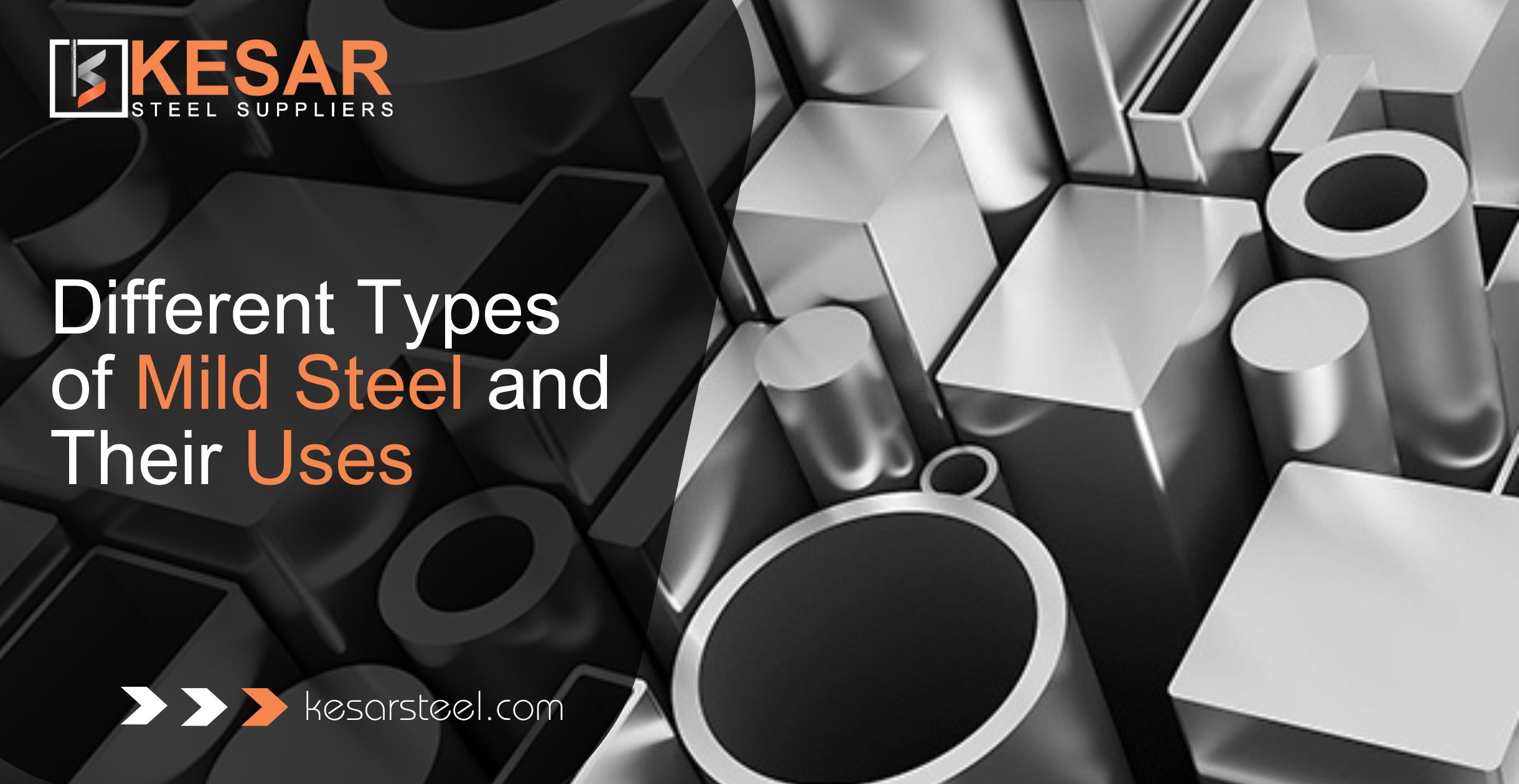Different Types of Mild Steel and Their Uses

11th Apr 2024
Mild Steel: The Backbone of Modern Construction
In today’s world of construction, manufacturing, automobiles, and other industries, steel is the most common product used in large volumes due to its properties like corrosion resistance, durability, longevity, and robustness. Because of the government’s rapid infrastructure development programme, consumption of steel has significantly increased in the last 10 years. According to a Livemint interview with the Steel Ministry, Steel consumption in FY24 has grown 15% to 64 million tonnes from last year. In the first half of FY23, steel consumption also increased by 11.5% to 55 mt from 49.7 mt in the first half of FY21. The World Steel Association has also said that Indian Steel Demand is expected to grow 6.2% in 2024.
Introduction
The general understanding among most people related to steel is that it's just a blend of iron and carbon. In fact, there are 3500 different grades of steel, depending on its process and the percentage of carbon in it. But here we will not be discussing all 3500 grades of steel because it can be confusing. We will talk about only mild steel, different types of mild steel, and their uses.
Why mild steel?
Mild steel is used on a large scale in various construction and engineering works because it contains a very low amount of carbon, ranging from 0.05% to 0.25%. This low amount of carbon gives mild steel some key advantages:
- Affordable: Compared to other steel types, mild steel is a budget-friendly option.
- Strong & Durable: It can handle a good amount of weight and pressure without breaking a sweat.
- Easy to Work: Cutting, welding, and shaping mild steel is a breeze, making it perfect for various projects.
These qualities make mild steel a versatile material used in countless industries. But there's more to the story! Different levels of carbon content within mild steel create variations, each with its own strengths and uses.
Types of mild steels and their uses
There are different types of mild steel based on their carbon content. Each type of steel has its own properties and specifications that are used for various purposes and applications.Mild steel can be categorised based on low-carbon, medium-carbon, and high-carbon steel according to their uses in diverse sectors:
Low-carbon steel (0.05%–0.30%)
Low-carbon steel is a category of Mild Steel which has a carbon content of 0.05%–0.25%. Low-carbon steel has low strength as compared to high-carbon steel, but due to its low carbon content, this steel is easy to fabricate, weld, cut, and bend into various structures. This Mild Steel is strong enough to be used in Machinery parts, Automobile parts, Roofing solutions, and many more.
Types and Uses of Low-Carbon Steel:
|
Types |
Uses |
|
Stainless Structural Steel |
Beams, Columns, Channels, pipes, etc |
|
Roofing, Car body parts, Gating, and fencing |
|
|
Water and Oil Supply, Structure for Ventilation and Heating |
|
|
Steel Rods and Bars |
Machinery parts, Nuts, Bolts, appliances, etc |
|
Steel Sheet Plates |
Bridges and Building frames, Cladding and Protection |
Medium-Carbon Steel (0.30%–0.60%)
Medium - Carbon steel (M2 steel) has a higher carbon content, comprising a range of 0.30% to 0.60% carbon. These minor increases in carbon significantly affect the metal's characteristics to the next level. More carbon blends result in increased Strength, deformation resistance, High load-bearing capacity, Weldability, and Fabrication to a certain extent as compared to Low-Carbon Steel. Because medium-carbon steel has a higher carbon content, it is suitable for use in various applications such as manufacturing, automobiles, rail industry, gears, and shafts.
Types and Uses of Medium-Carbon Steel:
|
Types |
Uses |
|
Medium-carbon alloy-steel |
Construction, Automotive, and Manufacturing |
|
Hot-rolled steel |
Gears, Shafts, Axles, and Structural frames |
|
Steel bars and Plates |
Agricultural Equipment, Automotive Parts, Ship Building, Construction, and Car Wheels |
|
Railway tracks, Crank Shafts, Machinery parts, etc |
|
|
Cold-drawn steel |
Manufacturing, Aerospace, Building Frame |
High-carbon steel (0.60%–1.00%)
Low- and Medium-Carbon Mild Steel provides a great extent of Malleability, Weldability, and bendability, but when there is a need for High-strength, Hard, and Durable steel, then High-Carbon Steel stands out as the best performer and top choice for applications such as Manufacturing, Cutting, Rail industry, high-tensile wires, etc.
High-Carbon Mild Steel consists of 0.60% to 1.00% carbon. However, if there is more than 2.00% carbon content in steel along with iron, then it will result in cast-iron metal, which has only limited use and is less durable and brittle.
Types and Uses of High-Carbon Steel:
|
Types |
Uses |
|
Steel Sheets and Plates |
Knives. Cutting Roller, Chainsaw, and Chisels |
|
Car frame manufacturing, Machine manufacturing, and Building |
|
|
Steel Pipes and Tubes |
Construction, Railway Bridges, and Rail sleepers Manufacturing |
|
Train Wheels, heavy-duty Duty Equipment, etc |
|
|
Steel Wire |
Cables, Fencing, and Tension wires |
Conclusion
In this blog, we have tried to provide basic knowledge about mild steel and its various types, such as low-carbon, medium-carbon, and high-carbon mild steel, and their uses.
Choosing the Right Mild Steel: As you can see, each type of mild steel offers unique properties perfect for specific applications. Not sure which type you need? Don't worry! The experts at Kesar Steel are here to help. Reach out to our experts.
Kesar Steel: Your One-Stop Shop for All Your Mild Steel Needs
We offer a wide variety of mild steel products, from low-carbon to high-carbon, in various shapes and sizes. Our experienced team can guide you in selecting the perfect steel type for your project, ensuring optimal performance and value for your money.






